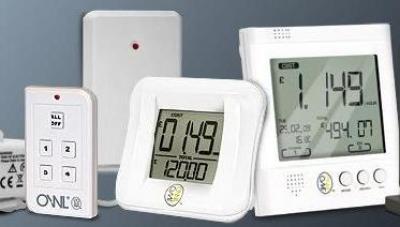IBM Makes 2010 Smart City Predictions

IBM offers a series of five predictions about how cities will grow smarter and what technologies will aid in that transformation over the next five years
In time for the spate of end-of-year speculation, IBM on 17 Dec. offered a series of five predictions about how cities will grow smarter and what technologies will aid in that transformation over the next five years.
Indeed, with an estimated 60 million people around the world moving into cities each year, experts predict that population in the world’s cities will double by 2050. As populations grow at a fast clip, civic leaders and citizens alike are looking for ways to help cities cope.
Thus, IBM has released the fourth annual edition of its Next 5 in 5, which is a list of five innovations that the company predicts will change cities over the next five years as cities face massive urbanisation and stressed infrastructure.
“IBM’s Next 5 in 5 is based on market and societal trends expected to transform cities, as well as emerging technologies from IBM’s labs around the world that have the potential to turn these predictions into reality,” IBM said. The predictions read, in part:
“[Prediction 1] Cities will have healthier immune systems
Given their population density, cities will remain hotbeds of communicable diseases. But in the future, public health officials will know precisely when, where and how diseases are spreading—even which neighborhoods will be affected next. Scientists will give city officials, hospitals, schools and workplaces the tools to better detect, track, prepare for and prevent infections, such as the H1N1 virus or seasonal influenza. We will see a “health Internet” emerge, where anonymous medical information, contained in electronic health records, will be securely shared to curtail the spread of disease and keep people healthier. …
[Prediction 2] City buildings will sense and respond like living organisms
As people move into city buildings at record rates, buildings will be built smartly. Today, many of the systems that constitute a building—heat, water, sewage, electricity, etc.—are managed independently. In the future, the technology that manages facilities will operate like a living organism that can sense and respond quickly, in order to protect citizens, save resources and reduce carbon emissions. Thousands of sensors inside buildings will monitor everything from motion and temperature to humidity, occupancy and light. The building won’t just coexist with nature—it will harness it. This system will enable repairs [to be made] before something breaks, emergency units to respond quickly with the necessary resources, and consumers and business owners to monitor their energy consumption and carbon emission in real time and take action to reduce them. Some buildings are already showing signs of intelligence by reducing energy use, improving operational efficiency, and improving comfort and safety for occupants. …
[Prediction 3] Cars and city buses will run on empty
For the first time, the “E” on gas gauges will mean “enough.” Increasingly, cars and city buses no longer will rely on fossil fuels. Vehicles will begin to run on new battery technology that won’t need to be recharged for days or months at a time, depending on how often you drive. IBM scientists and partners are working to design new batteries that will make it possible for electric vehicles to travel 300 to 500 miles on a single charge, up from 50 to 100 miles currently. Also, smart grids in cities could enable cars to be charged in public places and use renewable energy, such as wind power, for charging so they no longer rely on coal-powered plants. …
[Prediction 4] Smarter systems will quench cities’ thirst for water and save energy
Today, one in five people lack access to safe drinking water, and municipalities lose an alarming amount of precious water—up to 50 percent through leaky infrastructure. On top of that, human demand for water is expected to increase sixfold in the next 50 years. To deal with this challenge, cities will install smarter water systems to reduce water waste by up to 50 percent. Cities also will install smart sewer systems that not only prevent run-off pollution in rivers and lakes, but purify water to make it drinkable. Advanced water purification technologies will help cities recycle and reuse water locally, reducing energy used to transport water by up to 20 percent. …
[Prediction 5] Cities will respond to a crisis—even before receiving an emergency phone call
Cities will be able to reduce and even prevent emergencies, such as crime and disasters. IBM is already helping law enforcement agencies analyze the right information at the right time, so that public servants can take proactive measures to head off crime. The Fire Department of the City of New York has selected IBM to build a state-of-the-art system for collecting and sharing data in real time—to potentially prevent fires while protecting rescuers. IBM is also designing smart levee systems to prevent cities from devastating floods.”